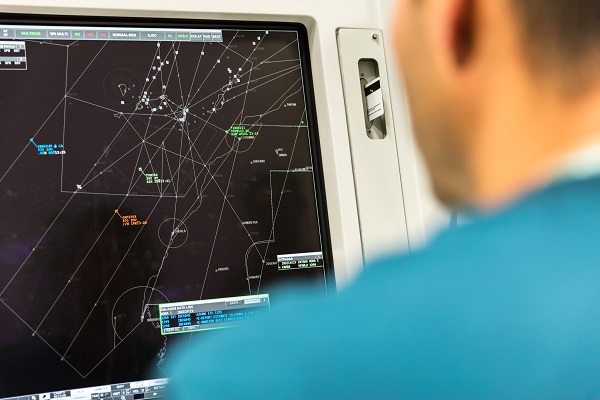Cross Border Arrival Management procedure goes live at Gatwick Airport
An innovative cross border arrival management system, known as XMAN, has gone into operation at Gatwick Airport following a successful SESAR trial run by NATS and partners across Europe, which has demonstrated multiple benefits, including a saving in fuel and CO2 emissions, as well as reduced holding times.
XMAN’s success relies on the sharing of information between NATS, Gatwick Airport and surrounding Air Navigation Service Providers (ANSPs), who work together to slow down aircraft which are up to 350 NM from London. This ultimately reduces the holding times for aircraft arriving into the airport.
NATS’ Swanwick and Prestwick Control Centres, Eurocontrol’s Maastricht Upper Area Control Centre (MUAC), France’s DSNA and the Irish Aviation Authority’s Shannon Control Centre, along with Gatwick Airport, have all been involved in the recent trial, the first time that these concepts have been demonstrated for a single-runway airport. This follows the success of XMAN’s introduction at Heathrow Airport in 2015.
Gatwick uses a single runway for both arrivals and departures which means that the runway capacity can be used equally for arrivals and departures or biased towards departures or arrivals to allow the airport to reduce delays. With the use of XMAN any delay data can be shared long before the aircraft reaches the Terminal Manoeuvring Area, so flights can slow down during the en-route phase, at a higher altitude where the aircraft operates more efficiently.
Absorbing delay before aircraft reach the airport is expected to save more than 26,000 minutes every year in airborne low-level holding, in turn saving the airlines around 1,200 tonnes of fuel, reducing CO2 emissions by 3,800 tonnes, and helping to reduce noise for local communities.
Andy Shand, Head of Queue and Capacity Management Solutions, said, “Deploying cross-border arrival management for Gatwick Airport is a great achievement and the first time these concepts have been demonstrated for a single-runway airport, helping to deliver time, fuel and emission savings.”
“It has been a great example of effective cooperation between multiple ANSPs, enabled by SESAR and we’d like to thank our partners for their support. There is still more to do, and we will continue to work with our partners across Europe through SESAR and other collaborations not only to minimise our environmental impact but also to ensure that air travel is more efficient.”
This project has received funding from the SESAR Joint Undertaking under the European Union’s Horizon 2020 research and innovation programme under grant agreement No 734145.
